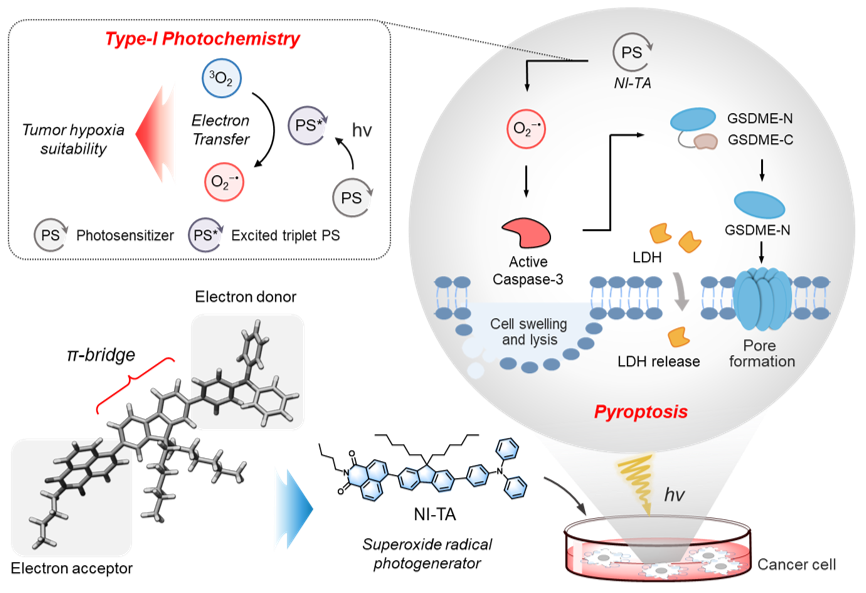In this study, we show that a photocatalytic superoxide radical (O2−•) generator, NI-TA, triggers pyroptosis in cancer cells. NI-TA was designed to take advantage of an intramolecular triplet-ground state splitting energy modulation approach. Detailed studies revealed that the pyroptosis triggered by NI-TA under conditions of photoexcitation proceeds through a caspase-3/gasdermin E (GSDME) pathway rather than via canonical processes involving caspase-1/gasdermin-D (GSDMD). NI-TA was found to function via a partial-O2-recycling mode of action and to trigger cell pyroptosis and provide for effective cancer cell ablation even under conditions of hypoxia (≤2% O2). In the case of T47D 3D multicellular spheroids, good antitumor efficiency and stemness inhibition are achieved. This work highlights how photocatalytic chemistry may be leveraged to develop effective pyroptosis-inducing agents.

https://doi.org/10.1021/jacs.2c03256
 Deep learning for development of organic optoelectronic devic...
Deep learning for development of organic optoelectronic devic...
 Direct C–H metallation of tetrahydrofuran and application in ...
Direct C–H metallation of tetrahydrofuran and application in ...

















